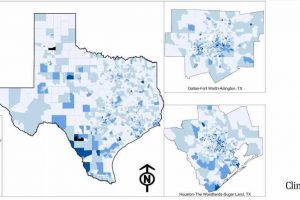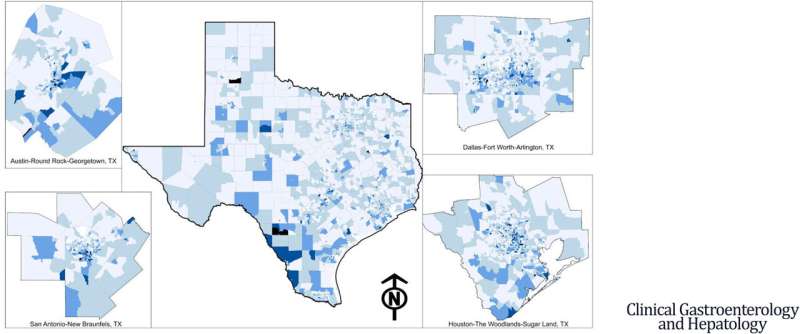Neighborhood-level factors contribute to liver cancer disparities across Texas


Texas has the highest rate of hepatocellular carcinoma (HCC)—the most common form of liver cancer—in the U.S. Within Texas, incidence rates vary by race, ethnicity and geographic locale. Researchers at Baylor College of Medicine examined these disparities at the neighborhood level, using the census tract to represent a neighborhood. They focused on measures of social determinants of health and the industries where most neighborhood residents are employed.
Across Texas, they found that level of economic deprivation in a neighborhood and majority employment in specific industries are associated with increased risk of HCC. Additionally, they showed that the association between these neighborhood-level measures and HCC vary across the state. The results are published in the journal Clinical Gastroenterology and Hepatology.
Using data from the Texas Cancer Registry, the researchers analyzed more than 11,000 HCC cases diagnosed between 2011–2015. The team used measures of demographics, socioeconomic status and employment provided by the U.S. Census Bureau to characterize the neighborhoods where people lived when they were diagnosed with HCC. They conducted statistical and geographical analysis to identify neighborhood-level characteristics associated with HCC risk.
They found that specific risk factors for HCC differ based on where a person lives in Texas. For example, the risk for HCC among African American and Hispanic populations was highest in West Texas, South Texas and the panhandle. However, some factors like age and socioeconomic status were not impacted by location. People over age 60 and people of low socioeconomic status had a higher relative risk for HCC across the entire state.
“Two areas of employment—construction and service occupations—also stood out as being associated with higher risk for HCC,” said Dr. Abiodun Oluyomi, corresponding author of the paper and assistant professor of medicine—epidemiology and population sciences at Baylor. “Our findings validate factors previously associated with HCC and our geographic analysis shows areas of Texas where specific intervention strategies may be most relevant. Further research, including longitudinal studies, are needed to clarify the roles of specific occupations in HCC risk.”
Source: Read Full Article




